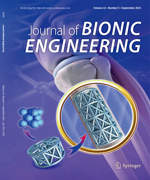As the essential technology of human-robotics interactive wearable devices, the robotic knee prosthesis can provide above-knee amputations with functional knee compensations to realize their physical and psychological social regression. With the development of mechanical and mechatronic science and technology, the fully active knee prosthesis that can provide subjects with actuating torques has demonstrated a better wearing performance in slope walking and stair ascent when compared with the passive and the semi-active ones. Additionally, with intelligent human-robotics control strategies and algorithms, the wearing effect of the knee prosthesis has been greatly enhanced in terms of stance stability and swing mobility. Therefore, to help readers to obtain an overview of recent progress in robotic knee prosthesis, this paper systematically categorized knee prostheses according to their integrated functions and introduced related research in the past ten years (2010?2020) regarding (1) mechanical design, including uniaxial, four-bar, and multi-bar knee structures, (2) actuating technology, including rigid and elastic actuation, and (3) control method, including mode identification, motion prediction, and automatic control. Quantitative and qualitative analysis and comparison of robotic knee prosthesis-related techniques are conducted. The development trends are concluded as follows: (1) bionic and lightweight structures with better mechanical performance, (2) bionic elastic actuation with energy-saving effect, (3) artificial intelligence-based bionic prosthetic control. Besides, challenges and innovative insights of customized lightweight bionic knee joint structure, highly efficient compact bionic actuation, and personalized daily multi-mode gait adaptation are also discussed in-depth to facilitate the future development of the robotic knee prosthesis.

 Table of Content
Table of Content
 Table of Content
Table of Content